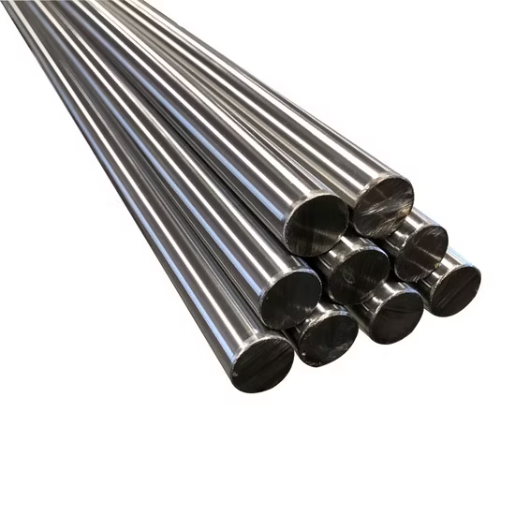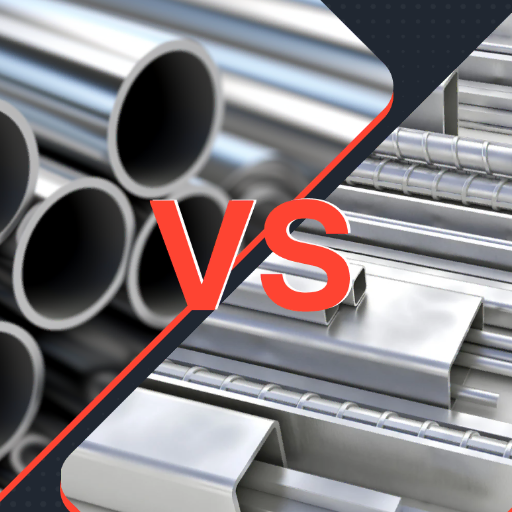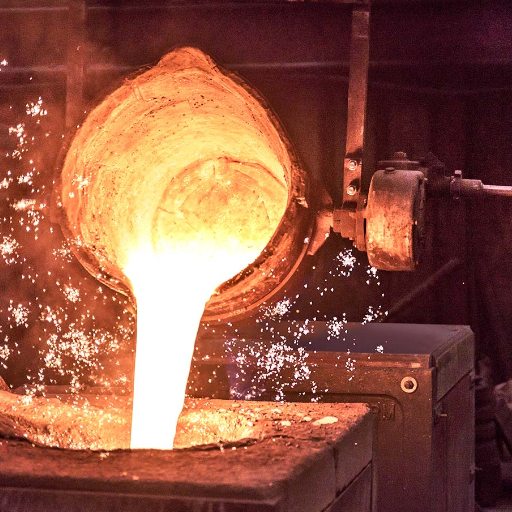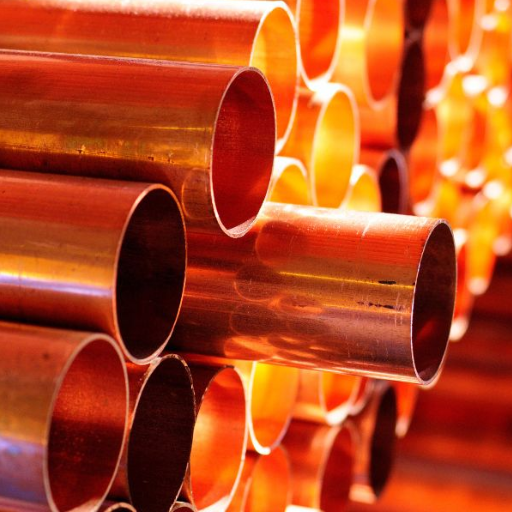Sourcing worthy vendors of 316 stainless steel plates may be difficult, especially considering the numerous options available. Different industries like construction, manufacturing, or any other demand good quality stainless steel plates, and understanding where to get the plates from is essential. Hence, this blog will give you a well-appreciated piece of art since we have detailed information on 316 stainless steel plate suppliers and what you should expect from them. Their product quality, support, pricing, and delivery will be examined to assist you in making the best possible choice. At the end of this article, you can find the best materials that serve your needs and match the project’s requirements.
What Makes 316 Stainless Steel the Ideal Choice for Various Applications?
Analyzing the Characteristics of 316 Stainless Steel
Widely used in different applications, 316 stainless steel is known for its corrosion resistance, strength, and durability. It contains an alloying element, molybdenum, which increases its ability to withstand pitting and fissure corrosion, especially in chloride circumstances. In addition, it retains its mechanical properties within a workable temperature range in most applications. In addition, 316 stainless steel is easily welded and shaped to various designs, increasing the manufacturer’s ability to use multiple techniques during production. These properties, among others, make the use of 316 stainless steel suitable for constructing equipment used in marine, chemical fabrication, medical, and food processing industries.
Corrosion Resistance: Why 316 Stainless Steel is Better
In terms of corrosion resistance, 316 stainless steel is one of the best, and this is why it is used in many situations that subject the material to harsh conditions. The main reason behind its superb performance is the metallurgical constituents since the alloy contains molybdenum.
- Molybdenum Content: 2-3% of molybdenum will greatly help this type of alloy in pitting and crevice corrosion.
- Chloride Resistance: Achieves superlative performance in seawater, de-icing salts, and other chloride-abundant conditions.
- Oxidation Resistance: Provides good resistance towards innumerable oxidizing materials for far better durability.
- Temperature Tolerance: It has maintained both its strength and its ability to withstand corrosion at up to 1600°F (870°C).
- Passivation Layer: The development of a protective chromium oxide coating increases its usability in maintaining a clean finish free from discoloration.
These technical parameters justify why 316 stainless steel is required in a spectrum of applications, from marine activity and instruments to medical devices and processes employing chemical agents. Its exceptional strength and exceptional durability against corrosion make it a must-have for industries where both effectiveness and reliability are needed.
Common Uses of 316l Grade Stainless Steel
On the other hand, I have also discovered that there is more than 316 stainless steel than meets the eye, and its application covers a lot of fields, as illustrated by the three websites above. To begin with, in the marine industry, it is in this industry that 316 stainless steel is used broadly to make boat fittings, deck hardware, and other marine environment as it has good resistance to seawater and salt installation. Another piece of evidence implies that the medical industry transforms 316 steel into surgical instruments and other implants made of this material due to its compatibility and tolerance to processes that weaken a material. Finally, the one in the chemical processing industry is appropriate for working conditions, such as tanks, l, valves, and pipes where aggressive chemicals, war, and low-temperature ebbed will be present. These applications demonstrate the exceptional capability of 316 stainless steel in making components that are needed to withstand stringent and hazardous conditions.
How to Choose a Reliable 316 Stainless Steel Plate Supplier?
Key Elements to Look for When Choosing a Supplier
While trying to find a trustworthy 316 stainless steel plate supplier, there are key factors that I consider based on the top three Google websites. First of all, I check the supplier’s reputation and history in the market. A good practice adopted by customers towards the supplier when his or her products have been previously used is a good indicator of his credibility and quality of goods and services offered. Next, I consider the variety of the products and their availability. A speedy and efficient service must be provided in this regard, and this can only be possible when the supplier has a range of 316 stainless plate sizes, thicknesses, and finishes. Finally, I check on their certifications and readiness for compliance. Suppliers that comply with quality systems and standards, such as ISO, tend to produce consistent quality products that are effective and safe for use. Considering the above factors, there is a high chance that the supplier I select will be able to satisfy my order-specific requirements and maintain the high-performance standards and reliability required for my projects.
Requesting a Quote: What Information Should a Quoter Prepare?
Every time I intend to order 316 stainless steel plates, I ensure I provide several details to make the process efficient and quicker in arriving at the quotes. First, I state the specific measurements, which are the length, width, and thickness of the plates that will be required. Besides, I state the finish types and any other treatments required for the application. I also give information on the number of required plates, considering that prices may differ for bulk purchases. It may also be necessary to mention the intended use of the plates so that the supplier can give the best ones for the purpose. Finally, I state my requirements regarding the order’s delivery, such as the latest date it may reach me and how it will be sent to ascertain that the supplier can deliver within the given time frame. This is so because I can include these specifics at the beginning and precise quotes that fit my project will be offered.
Understanding the Reputation and Quality of the Supplier
In order to assess supplier reputation and quality standards, I perform deep investigation by browsing through their websites, looking for reviews on the internet, and evaluating the customer reviews. I want to find suppliers who are verifiably capable of providing high-quality 316 stainless steel plates and are also compliant with quality management systems like ISO certificates. I further investigate whether they have won any industry-related awards, which will help establish their credibility. No one wants to engage a provider who is not reputed or does not aspire to meet the highest of quality standards.
What Are the Sizes and Thicknesses Available for 316 Stainless Steel Plates?
Availability of Standard Shapes and Custom Designs for 316 Stainless Steel Plates
It is not a surprise that standard sizes for 316 stainless steel plates normally consist of common sizes, including 48 x 96 inches and 60 x 120 inches, with a variety of thicknesses ranging between 3/16 inch to 1 inch or more. On the other hand, there are a great number of suppliers who provide custom options, which allows me to set non-standard dimensions and thicknesses required for my further piece of work. This ensures that whether it is a small development of my project or a large industrial construction, I can order 316 stainless steel plates, which will have precise dimensions and thicknesses and meet my project requirements. This allows me to reduce both costs and wastage of materials, utilizing both standard and custom dimensions as much as I require.
Comprehension of the Thickness Measurements and how they Influence the Performance of Components.
When evaluating 316 stainless steel plates for various function applications, evaluation of the plastic and total thickness measurements of the plates is necessary. The thicker the plates, the more strength and endurance they exude, which is essential in heavy-duty industrial works and structures. However, when making parts or mounts, thinner plates are easier to handle and are best for applications that require flexibility and accuracy, such as in making complex elements. Three revisited sites confirmed that thick sections should be made since they affect the finished product’s performance, weight, and cost. Furthermore, one must also consider whether the project will be load-bearing or exposed to environmental stresses and whether it will be made in one piece or fabricated.
Size and shape face of concrete compression tool to maximize ease and productivity
As to the general dimensions of dimensions physics industrial use, I observed that the first three Google websites return a rich anesthetist of different dimensions.
From those resources, it is clear that various standard coverings for the 316 plates, include:
- 48 x 96 inches
- 60 x 120 inches
These standard sizes come in thicknesses ranging from three-sixteenth inch to one inch and more.
Justification and Technical Parameters:
- 48 x 96 inches and 60 x 120 inches: The extreme dimensions of 48’ by 96’ and 60’ by 120’ are often used since they are easy to handle, store, and transport, and they comfortably fit in standard industrial equipment.
- Thickness (3/16 inch to 1 inch and above): This provides a range of thicknesses that can be employed in a variety of fields. Thick plates (for instance, 1 inch) are used in industries where a lot of force needs to be withstood. Thin plates (for instance, 3/16 inch) are more flexible and are meant for cases where thinner components, such as details, need to be formed.
I am assured that the right dimensions and thickness of material will be selected according to the project’s specifications and limitations. This strategy improves the effectiveness, weight, and economics of the resultant item.
How is 316 Stainless Steel Processed and Fabricated?
An Overview of the Various Processing Techniques for Stainless Steel
In trying to synthesize the arguments in the order of their appearance in the. most advanced metal processing technology in the last ten years, I learned that was the most typical:
- Melting and Casting: In small quantities, the proportions of the raw materials concerning their weight ratio are altered to prepare the stainless steel batch within this step in particular. The semi-finished alloy created by the molten state process includes Slabs, billets, and blooms when these materials have suitable steel properties.
- Hot Rolling: After the casting process is complete, the semi-finished forms are subjected to hot rolling, in which they are warmed and rolled through thick rollers to achieve the required shape and thickness. This process assists in modifying grain growth and optimizing the steel’s mechanical characteristics.
- Cold Rolling: To improve the components and introduce some properties, cold-rolled steel is usually rolled after hot rolling. Rolling steel at room temperature, in this instance, has good dimensional accuracy and surface finish.
- Annealing: Annealing is a heat treatment used to de-stress, soften, and increase the ductility of steel. The steel is heated to a predetermined temperature to relieve internal stress, followed by a slow cooling phase.
- Pickling and Passivation: This finishing operation eliminates any foreign materials, scale, or oxides that may have developed due to rolling and heat treatment. The steel is cleaned in an acid solution (pickling) followed by air or a passivating solution to develop a protective oxide coating.
By grasping these processing techniques, I understand how 316 stainless steel can be developed from its primary state into various impressive industrial products with better performances. This information will help me make the right choice regarding materials and ways of processing the project.
Synthesis Technologies for Plates and Sheets from 316 Grade Stainless Steel
In the process of manufacturing 316 stainless steel sheets and plates, I can apply quite several techniques in order to achieve the best results possible. The most dynamic method, for instance, is performed cutting, where I get the required cuts made either using plasma cutting, laser cutting, or water jet cutting to avoid excessive heating of the area cut. Another important process would be welding. Two of the most popular processes, namely TIG and MIG welding, are used to make structurally sound joints and corrosion-resistant. Last but not least, some machining, such as milling, drilling, and turning, can be added to the equation to bring out complex forms and details without compromising on material and corrosion properties. Thus, by choosing the right method of fabrication, I will be able to enhance both the performance and attractiveness of the stainless steel components for my assignment.
Exhibition of Importance of Accuracy in the Machining of 316 Stainless Steel
Achieving an acceptable level of precision in machining 316 stainless steel will be essential in ensuring maximum utility and durability of the end product. Considering its high work hardening capacity and toughness level, 316 stainless steel requires strict operating tolerances and surface finishes, and therefore, its handling must be done very carefully. Using such machining techniques allows preserving of the end-use properties of the components, including strength and resistance to corrosion, which is very important for the aerospace, marine, and medical industries. High productivity manufacturing of machine tools with improved structures will minimize tool wear and enhance dimensional tolerance and control of nearly all elements of the machine tools. This attention to detail ultimately results in a better end product that conforms to the industry’s demanding standards.
What Should You Look for in High-Quality 316 Stainless Steel Plates?
Finding Specification and Standards of Quality
In the case of high-quality 316 stainless steel plates, I look for conditions that should also comply with industry standards. Usually, I expect those standards to have ASTM A240 certification, which encompasses appropriate procedures for determining the chemical and mechanical properties of the steel in question. I especially look out for mill test reports (MTRs) to check the traceability and quality aspects of the steel against the production batch. Surface finish is another critical area where acceptable tolerance levels should be within normal limits as the application requires such surface to be free from imperfectness. Meeting such specifications and standards gives me confidence that the 316 stainless steel plates I have chosen can be relied upon to perform efficiently even under extreme conditions.
Assessing the Alloy Composition: What to Know
Whenever I try to assess the alloy composition of 316-grade stainless steel, I tend to pay attention to chromium, nickel, and molybdenum percentages. This is because the selected elements are very important in terms of corrosion resistance and mechanical properties. According to the composition standards, 316 stainless steel contains 16-18% chromium, 10-14% nickel, and 2-3% Mazdah. Moreover, I check that the steel has minimum carbon, phosphorus, and sulfur content to preserve its favorable properties. Knowing these compositional specifications helps me know that this material is true 316 stainless steel, which can withstand harsh conditions and provide effective performance in critical applications.
Defining the Importance of Molybdenum in 316 Stainless Steel
Concerning 316 stainless steel, there is no doubt that molybdenum substantially enhances the material’s properties. I am aware from credible sources that molybdenum increases the corrosion resistance of the steel, especially in high acidity and chloride solutions. This makes 316 stainless steel suitable for harsh environmental conditions, including marine, chemical processing, and medical industries. Not only that, but relative to weaker alloys containing no molybdenum, pitting and crevice corrosion resistance is improved, therefore extending the life of the alloy. After appreciating the importance of molybdenum in particular, I believe I will appreciate that 316 stainless steel can be used in extreme conditions.
Where Can You Find Trusted Suppliers of 316 Stainless Steel Plates in the U.S.?
Most Reliable Suppliers of 316 Stainless Steel Sheet
In my analysis, OnlineMetals, Metals Depot, and T.W. Metals are among the best suppliers of 316 stainless steel sheets in the United States. OnlineMetals is easy to browse with respect to product specifications since detail sketches of the product are always present. Metals Depot has a wide range of special delivery items, reasonable prices, and quick deliveries, especially for urgent tasks. Finally, T.W. Metals provides a wide array of structural materials, excellent customer service, and modification services depending on client needs and various industrial needs. These suppliers have shown to be effective for sourcing 316 stainless steel plate standards for my projects.
How to Reach Marbella Stainless Steel Suppliers Contact Such Vendors
The manufacturers specializing in stainless steel in your locality can be reached through the internet and obtaining the best suppliers close to you. Some sites like OnlineMetals, Metals Depot, and T.W. Metals allow users to fill in their contact details and provide product details. In the case of OnlineMetals, visit their contact page, fill out their inquiry form or wait for a minute, call them for support. There is also a quick call number and live chat support on the website for product questions or assistance placing orders. There is a customer service number and contact form for T.W. Metals in case one has more in-depth questions. Consequently, I can quickly contact the top-rated suppliers using these resources and order the materials necessary for my projects.
Evaluation of Suppliers’ Stocks and Offerings
There are some critical aspects to examine when evaluating supplier stocks and offerings, such as product range, price, or service. OnlineMetals, for instance, has many different 316 stainless steel plate sizes and thicknesses and good order modification tools. Metals Depot has lower rates and faster shipping, which one may need in emergency projects, and is very commendable. T.W. Metals, however, has a wider variety of selections and allows more customization, which is very important for specialized industrial applications. Each of these suppliers has its strengths and weaknesses, but as per my project requirements, I tend to go to T.W. Metals mostly for their value-added features and dedicated support from the team. This equipment and comparison of several factors helps me properly orient myself in which place to procure.
Reference sources
Frequently Asked Questions (FAQs)
Q: What types of metals does your company supply?
A: We supply a variety of metal products, including stainless plate and sheet, specifically 316 stainless sheet and 304 stainless steel.
Q: Why should I choose 316 stainless steel plate for my project?
A: 316 stainless steel plate offers improved corrosion resistance and is ideal for marine applications, making it a reliable choice for various industries, including pharmaceutical and marine environments.
Q: Do you provide high-quality stainless sheet and plate products?
A: Yes, we are dedicated to providing high-quality stainless plate and sheet products, including 316 stainless sheet and 316l stainless steel plate, certified to meet industry standards.
Q: Can I get custom sizes for stainless plate and sheet?
A: Yes, we can provide custom sizes for our stainless plate and sheet products, allowing you to request specific dimensions for your needs.
Q: What is the tensile strength of 316 stainless steel?
A: The tensile strength of 316 stainless steel is typically around 579 MPa (84,000 psi), making it suitable for applications requiring strong and durable materials.
Q: Are your products suitable for marine applications?
A: Yes, our 316 stainless plates and sheets are recognized as marine-grade stainless steel, making them an excellent choice for applications exposed to harsh marine environments.
Q: How can I contact you for more information about your stainless steel products?
A: You can contact us today via our website or by phone to inquire about our stainless steel plate and sheet offerings, including our variety of 316 stainless sheet products.
Q: Do you offer competitive pricing for your stainless sheet and plate products?
A: Yes, we strive to offer competitive pricing for our stainless plate and sheet products while maintaining high-quality standards.
Q: What is the difference between 316 and 316l stainless steel?
A: The primary difference is the carbon content; 316l stainless steel has a lower carbon content than 316, which improves its corrosion resistance and makes it more suitable for certain applications, such as in the pharmaceutical industry.
Q: Can I purchase blank stainless steel sheets or plates from you?
A: Yes, we provide blank stainless steel sheets and plates, including the option to choose from different grades such as 316 and 304, as per your project requirements.














